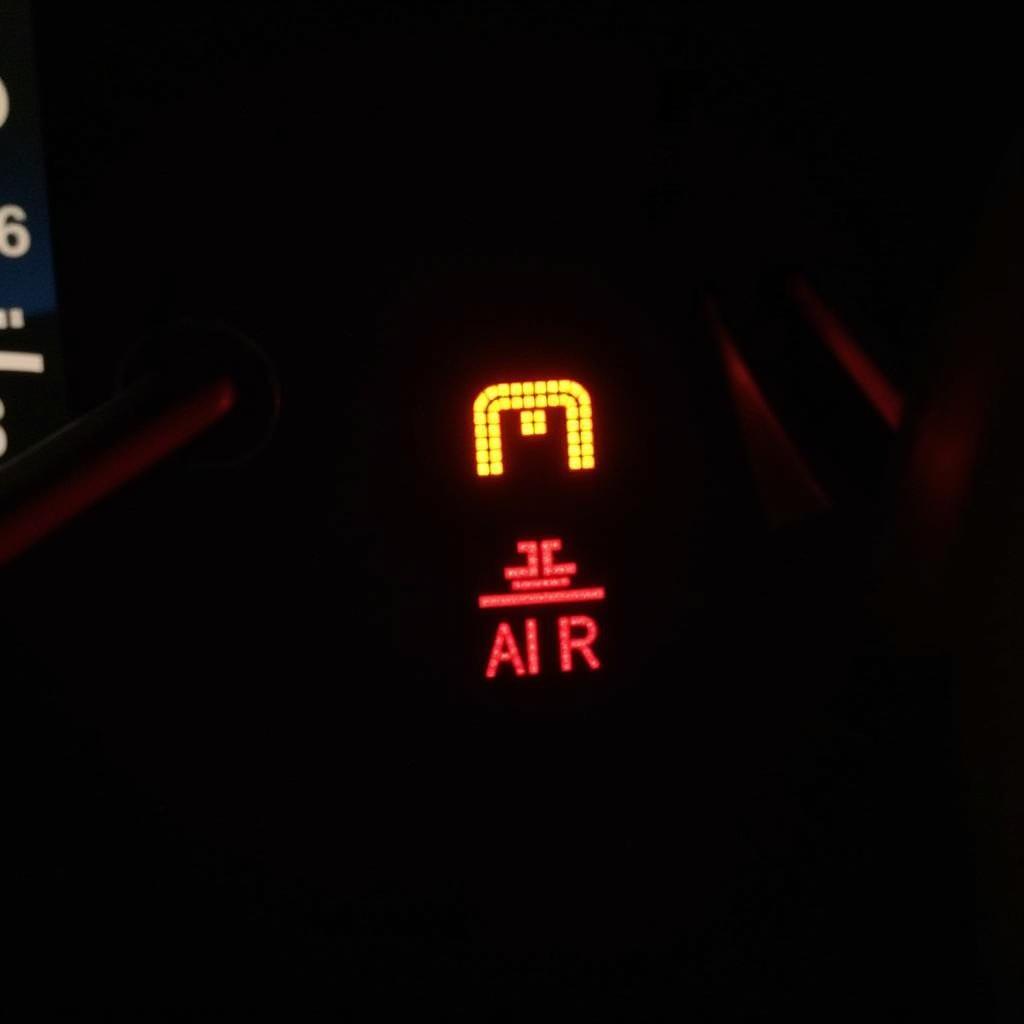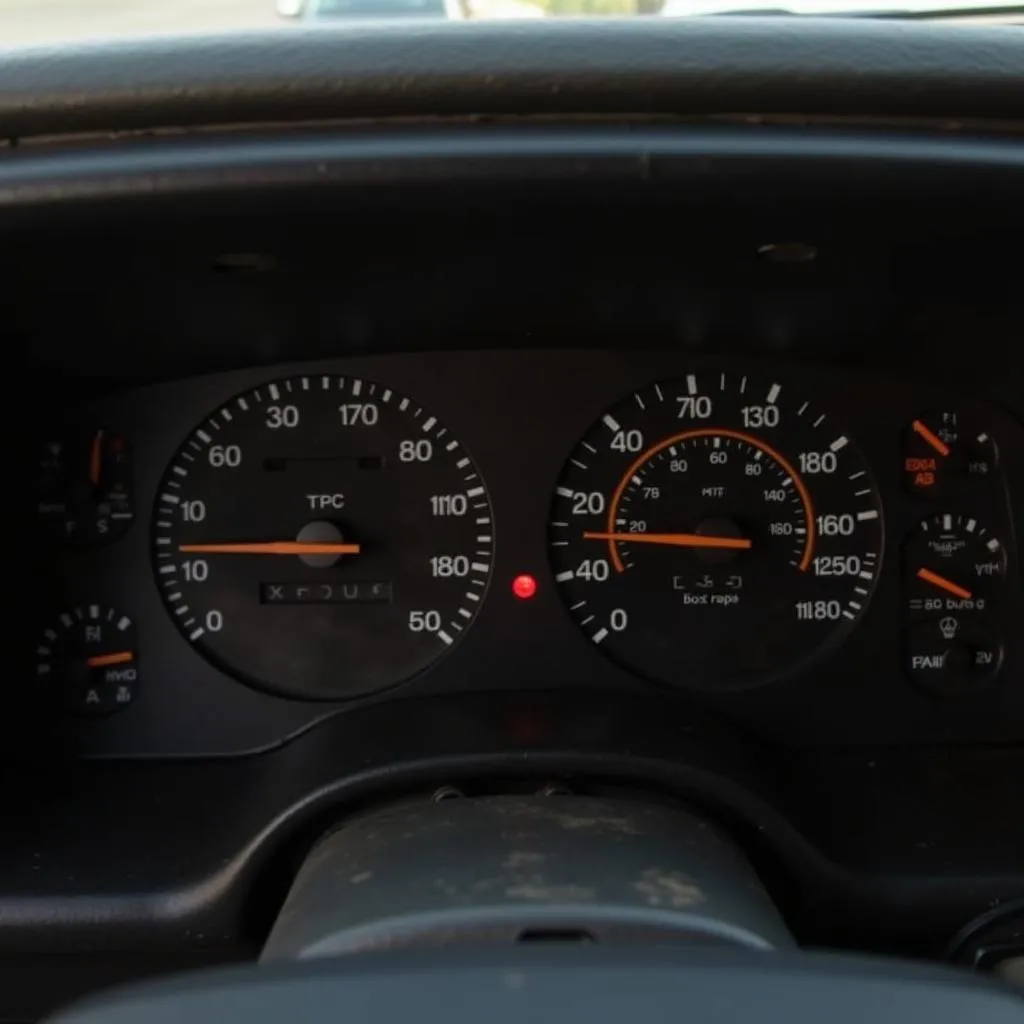The AdBlue warning light on your dashboard can be a frustrating sight. It’s often accompanied by a message that your AdBlue system is low or needs servicing, leaving you wondering what to do next. But don’t panic! This article will guide you through the common causes of AdBlue warning lights, explain what they mean, and offer solutions to get your vehicle back on the road.
What is AdBlue?
AdBlue is a urea-based fluid that’s injected into the exhaust system of diesel vehicles to reduce harmful nitrogen oxides (NOx) emissions. It’s a vital component of modern diesel engines, ensuring compliance with strict environmental regulations. The AdBlue system consists of a tank, a pump, an injector, and a sensor that monitors fluid levels.
Why Is My AdBlue Warning Light On?
Several reasons could trigger the AdBlue warning light. Understanding these reasons will help you address the issue effectively:
1. Low AdBlue Fluid Level:
This is the most common reason for the AdBlue warning light. When the fluid level falls below a certain threshold, the sensor alerts you, typically with a warning light and a message indicating “AdBlue Low.”
What to do:
- Top up your AdBlue tank: This is usually the simplest solution. You can purchase AdBlue at most gas stations and auto parts stores. Refer to your vehicle’s owner’s manual for instructions on how to refill the tank.
- Check for leaks: Before refilling, inspect the AdBlue tank and surrounding areas for any signs of leaks. Leaks can cause the system to lose fluid prematurely.
- Schedule a check-up: If you suspect a leak or if topping up the tank doesn’t resolve the warning light, it’s advisable to have your vehicle checked by a qualified mechanic.
2. AdBlue System Malfunction:
The AdBlue system relies on various components working together. Malfunctions can occur in:
- AdBlue Pump: A faulty pump may fail to deliver the appropriate amount of AdBlue to the exhaust system.
- AdBlue Injector: A clogged or damaged injector can prevent the fluid from reaching the exhaust properly.
- AdBlue Sensor: A defective sensor may provide inaccurate readings to the vehicle’s computer, triggering a false warning.
What to do:
- Diagnostic Check: A professional mechanic can use a diagnostic scanner to identify the specific problem within the AdBlue system. They’ll examine error codes and test the various components.
- Replacement or Repair: Depending on the issue, the mechanic will either replace faulty components or repair damaged parts to restore the AdBlue system’s functionality.
3. AdBlue Quality Issues:
Using contaminated or incorrect AdBlue can lead to problems in the system. The fluid should always meet the required standards and should not be mixed with other chemicals or additives.
What to do:
- Use Approved AdBlue: Ensure you use AdBlue that’s certified and approved for your vehicle.
- Avoid Contaminated AdBlue: Store AdBlue in a clean container and protect it from dust and moisture.
How to Reset AdBlue Warning Light?
Once you’ve addressed the underlying issue, you may need to reset the AdBlue warning light. Here’s how:
- Refill the AdBlue tank: If you’ve topped up the AdBlue, ensure the tank is at least 80% full.
- Start the engine: Allow the engine to run for a few minutes.
- Check the warning light: The AdBlue warning light should automatically turn off after the system recognizes the fluid level.
If the warning light doesn’t reset after these steps, it’s recommended to contact a qualified mechanic for further diagnostics and assistance.
Frequently Asked Questions (FAQ)
Q: Is it safe to drive with an AdBlue warning light?
A: While you can drive short distances with a low AdBlue level, it’s best to refill the tank as soon as possible. Driving with a malfunctioning AdBlue system can lead to engine damage and potential legal issues.
Q: How long can I drive with low AdBlue?
A: The distance you can drive with low AdBlue varies depending on the vehicle and how much fluid is remaining. However, it’s generally advisable to refill the tank as soon as the warning light appears to avoid any complications.
Q: Can I use regular urea for AdBlue?
A: No, regular urea is not a suitable substitute for AdBlue. AdBlue is a specifically formulated solution designed for diesel exhaust systems. Using other chemicals can damage your vehicle’s engine and void your warranty.
Q: How often should I check my AdBlue level?
A: It’s a good practice to check your AdBlue level regularly, especially if you’re a frequent driver. This will ensure you don’t run out of fluid unexpectedly.
Q: Can I add AdBlue myself?
A: Yes, you can usually add AdBlue yourself. Just follow the instructions in your owner’s manual. Make sure to use the correct AdBlue and be careful not to spill it.
Conclusion
AdBlue warning lights can be concerning, but by understanding the potential causes and solutions, you can effectively address the issue. Remember to top up your AdBlue tank when necessary, use certified AdBlue, and have your system checked by a mechanic if you suspect a malfunction. By taking these steps, you can ensure your diesel vehicle runs smoothly and complies with environmental regulations.


